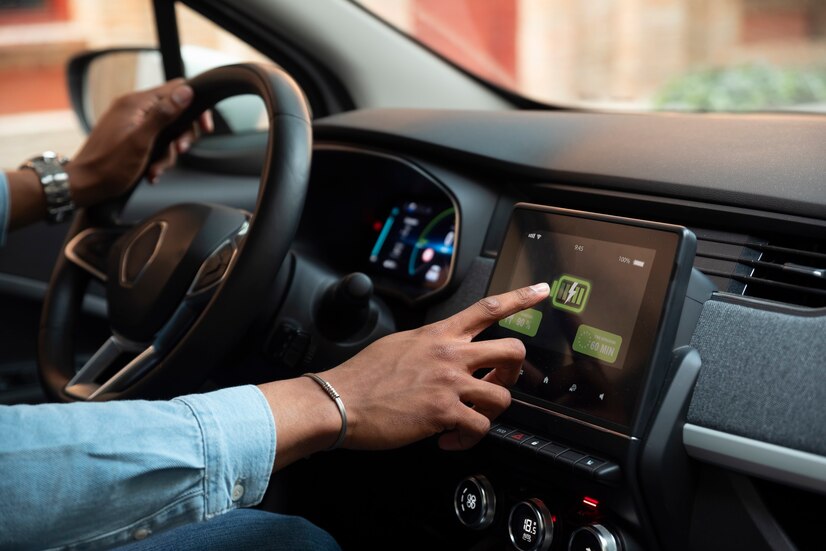In today’s interconnected world, **GPS Systems** have become an indispensable part of our daily routines. From finding the quickest route home to guiding military operations, Global Positioning System technology underpins countless applications that enhance safety, efficiency, and convenience. But what exactly are **GPS Systems**, how do they work, and what does the future hold? This comprehensive guide explores every facet of **GPS Systems**, providing insights into their history, components, applications, and future developments. Whether you’re an outdoor enthusiast, a business professional, or simply curious about the technology steering our world, this article will equip you with everything you need to know about **GPS Systems**.
Understanding How GPS Systems Work
The Basic Principles of GPS Technology
**GPS Systems** rely on a network of satellites orbiting the Earth, ground control stations, and user receivers. The core idea is quite simple: satellites broadcast signals containing precise time data and orbital information. When a **GPS Receiver** picks up signals from multiple satellites, it can determine its exact location on the planet.
The Role of Satellite Networks and Ground Control Stations
There are typically a constellation of at least 24 active satellites distributed across various orbits, ensuring that at least four satellites are visible from almost anywhere on Earth at any time. These satellites maintain their precise positions via ground control stations—complex facilities responsible for monitoring, adjusting, and managing satellite trajectories to ensure accuracy.
The Triangulation Process
Triangulation involves using signals from at least four satellites to pinpoint a location. Each satellite transmits a time-stamped signal, and the receiver calculates how long the signal took to arrive. Because signals travel at the speed of light, the receiver can determine its distance from each satellite. Combining these distances allows the system to triangulate the exact position—latitude, longitude, and altitude.
Position Calculation and Error Sources
The calculation considers electromagnetic signal delays, atmospheric conditions, and clock inaccuracies. Corrections—such as those provided by augmentation systems—help improve precision, especially for critical applications like aviation or surveying.
Key Components of a GPS System
GPS Satellites
Types and Functions
There are different types of satellites in the **GPS System**, including navigation satellites, which broadcast positioning data, and newer satellites with enhanced capabilities like improved signals for better accuracy.
Orbits and Coverage
These satellites orbit around Earth every 12 hours, maintaining a constellation that offers global coverage, ensuring users can always access signals regardless of location.
GPS Receivers
Hardware Components
**GPS Receivers** include antennas, processing units, and displays, all designed to interpret satellite signals and calculate position. The quality and type of the receiver influence the accuracy and usage scope.
Types of Receivers
- Handheld units: For outdoor activities like hiking or geocaching.
- Automotive devices: Installed in cars for navigation.
- Integrated receivers: Embedded in smartphones, tablets, or equipment.
Control Stations and Augmentation Technologies
Ground control stations continuously monitor satellite health and orbital parameters. Augmentation systems like WAAS (Wide Area Augmentation System) or Galileo enhance accuracy and reliability, especially in challenging environments.
Types of GPS Systems and Their Uses
Navigation Devices
Automotive GPS Devices
These devices guide drivers with real-time directions, traffic updates, and points of interest, making commutes smoother and more efficient.
Handheld GPS for Outdoors
Perfect for hikers, trekkers, and adventurers, these units provide reliable positioning in remote areas where mobile signals may be weak.
Marine and Aviation GPS
Specialized systems designed to withstand harsh conditions, offering precise navigation for ships and aircraft to ensure safety.
Mobile Device GPS
Smartphones and tablets integrate **GPS Systems** seamlessly, enabling users to access navigation, location-based services, and apps like Google Maps or Waze, which depend heavily on GPS technology.
Integrated GPS in Vehicles and Equipment
Fleet management systems use GPS to monitor vehicle movements, optimize routes, and improve logistics. Agricultural machinery benefits from GPS-guided plowing and planting, increasing productivity and precision.
Real-World Applications of GPS Systems
Personal Navigation
- Driving Directions: Leading users from point A to B with real-time updates.
- Outdoor Activities: Enhancing safety during hiking, mountain biking, and trekking trips.
Commercial and Industrial Uses
- Transportation & Logistics: Tracking freight and managing routes efficiently.
- Asset Tracking: Monitoring valuable equipment and inventory.
- Emergency Services: Rapid location identification to assist rescue operations.
Scientific and Environmental Monitoring
Researchers use precise GPS data to map terrains, study environmental changes, and conduct geographical surveys, contributing vital data to understanding our planet.
Military and Defense
- Guided Missiles: Ensuring accurate targeting and delivery.
- Tactical Navigation: Enabling soldiers to navigate unfamiliar terrains securely.
Advantages and Benefits of GPS Systems
| Features | Advantages |
|---|---|
| High Accuracy | Provides precise positioning data for various applications |
| Real-Time Updates | Allows immediate navigation and tracking |
| Global Coverage | Accessible from virtually anywhere on Earth |
| Ease of Use | Intuitive interfaces and integration with devices make it accessible |
| Safety & Efficiency | Reduces travel time, improves logistics, and enhances safety |
Limitations and Challenges Facing GPS Systems
Signal Blockages
Urban environments with tall buildings (urban canyons), tunnels, or dense forests can obstruct satellite signals, leading to reduced accuracy or loss of signal.
Dependence on Satellite Signals
GPS cannot operate effectively indoors or underground, limiting its utility in certain environments.
Accuracy Limitations
Factors such as atmospheric interference or satellite errors can slightly distort location data. Precise applications often require augmentation systems to correct these errors.
Privacy and Security Concerns
The collection and sharing of location data raise privacy issues. Unauthorized access or hacking pose security risks, emphasizing the need for robust data protection measures.
Future Trends Shaping the Evolution of GPS Technology
Multiple Satellite System Integration
Combining GPS with other global navigation satellite systems like Galileo, GLONASS, and BeiDou improves coverage and accuracy worldwide.
Enhancing Precision with RTK and PPP
Real-Time Kinematic (RTK) and Precise Point Positioning (PPP) are techniques used to achieve centimeter-level accuracy, vital for autonomous vehicles and high-precision mapping.
Autonomous Vehicles and AI
GPS systems will play a critical role in autonomous vehicle navigation, especially when combined with AI algorithms that predict routes and obstacle avoidance.
Next-Generation Satellite Technologies
Upcoming satellite constellations aim to provide better coverage, faster data transmission, and enhanced resilience against interference or jamming.
Conclusion: The Enduring Impact and Future of GPS Systems
From everyday navigation to complex military operations, **GPS Systems** have revolutionized how we interact with our world. As technology advances, these systems will become even more accurate, integrated, and indispensable. The future promises innovations that will extend GPS capabilities—possibly transforming autonomous transportation, environmental sciences, and global connectivity. Embracing this evolution ensures we stay connected, informed, and safe in an increasingly dynamic planet. For more information, visit GPS.gov and industry-leading sources to stay updated on the latest technological advancements.
Frequently Asked Questions about GPS Systems
- What is the primary function of GPS Systems?
- To provide accurate location and navigation information globally by triangulating signals from satellites.
- How many satellites are typically involved in a GPS constellation?
- At least 24 satellites are active, providing global coverage and reliable signals.
- Can GPS work indoors?
- Standard GPS systems struggle indoors due to signal blockage, but techniques like Wi-Fi-based positioning can supplement indoor navigation.
- What are some common applications of GPS technology?
- Navigation for vehicles, outdoor recreation, asset tracking, environmental monitoring, and military operations.
- What are GPS augmentation systems?
- Systems like WAAS and GLONASS improve GPS accuracy and reliability, especially in critical applications.
- Will GPS be replaced by other technologies?
- While alternative navigation methods emerge, GPS remains foundational, often integrated with other systems for enhanced performance.





